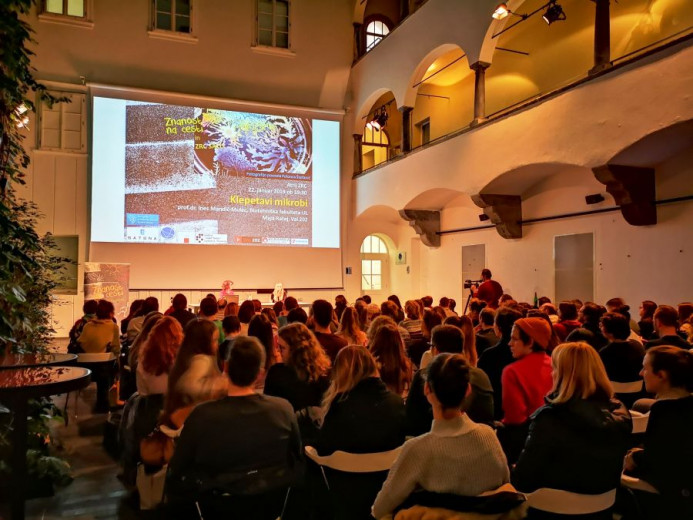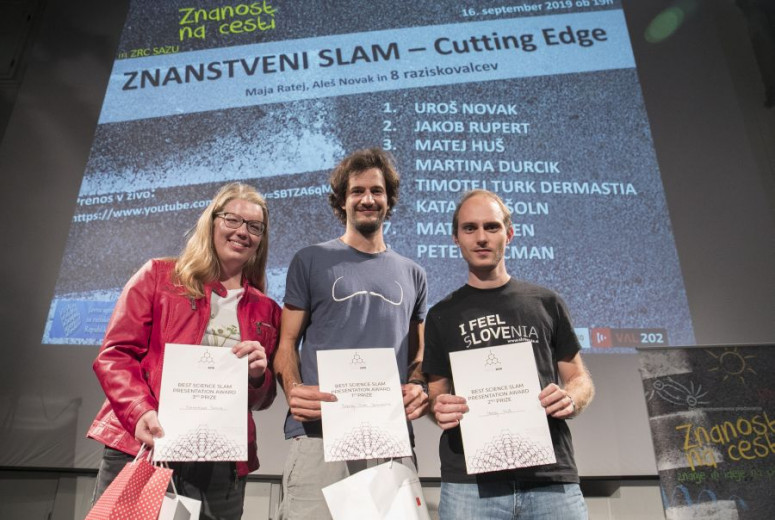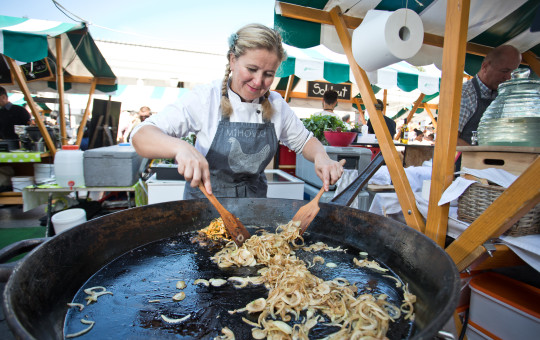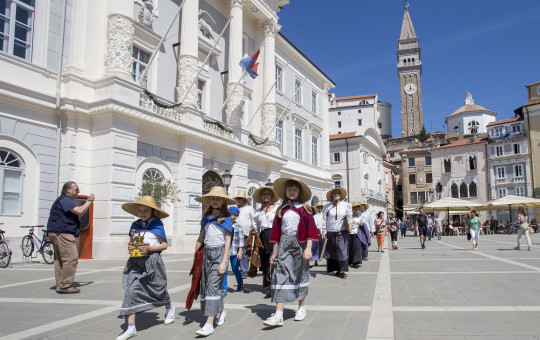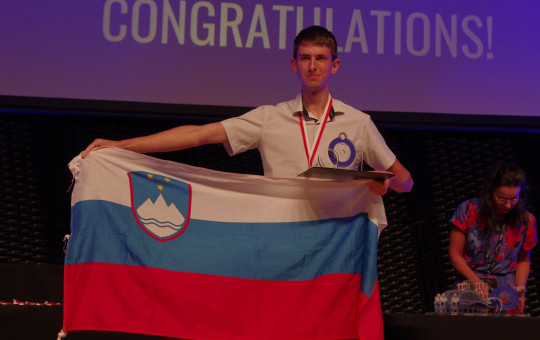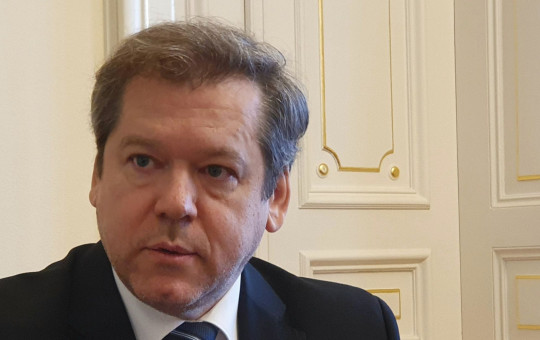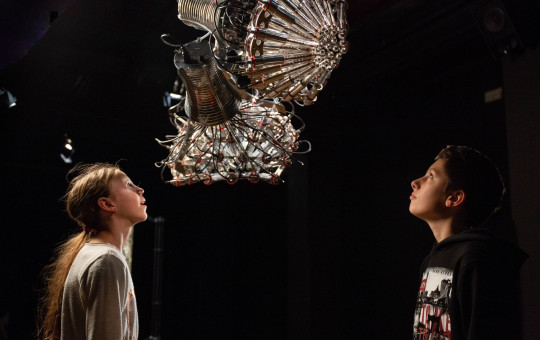These were the options one young couple from Ljubljana were discussing one Tuesday night. Many people would probably opt for a beer or the cinema. Why would anyone want to spend their evening listening to serious and difficult topics after a hard day? And yet they decided to go to the ZRC Atrium to hear a lecture with a promising title. And they were not the only ones!
After drawing crowds to the Kavarna Union café for a few years, the lectures that are part of the Science on the Street project are now held in the ZRC Atrium at Novi trg. The organisers make sure that the programme is diverse, covering lectures for wide audiences on various scientific fields, from astrophysics and biochemistry to neuroscience and the humanities.
Topics include the challenges of brain disease to modern society, the presence of drug and medicinal substance residues in rivers, quantum "tricks", the fusion power plant, collaborative robots, the expected development of nanotechnology as well as the various images of beer.
The attendees come from different age groups, but the majority are young people. They come because they like the atmosphere and are interested in the topic of a particular lecture.
-
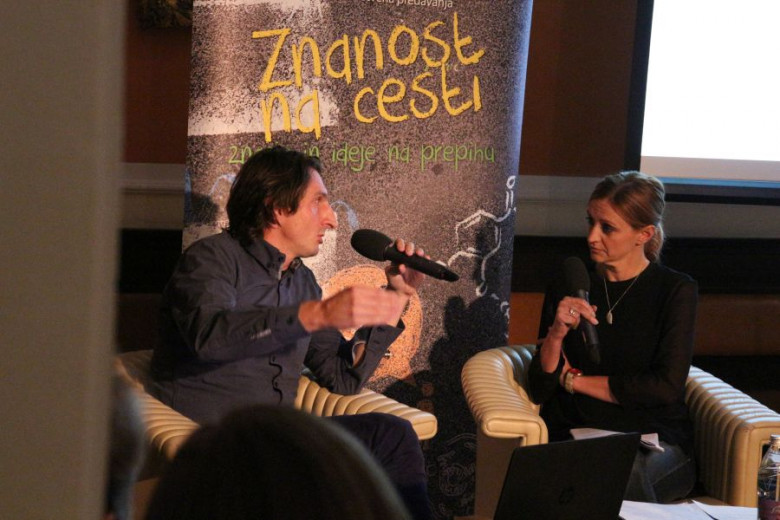
The Science on the Street project is successfully spreading to include various events featuring scientists presenting their achievements. Photo: Dr Saša Novak
-
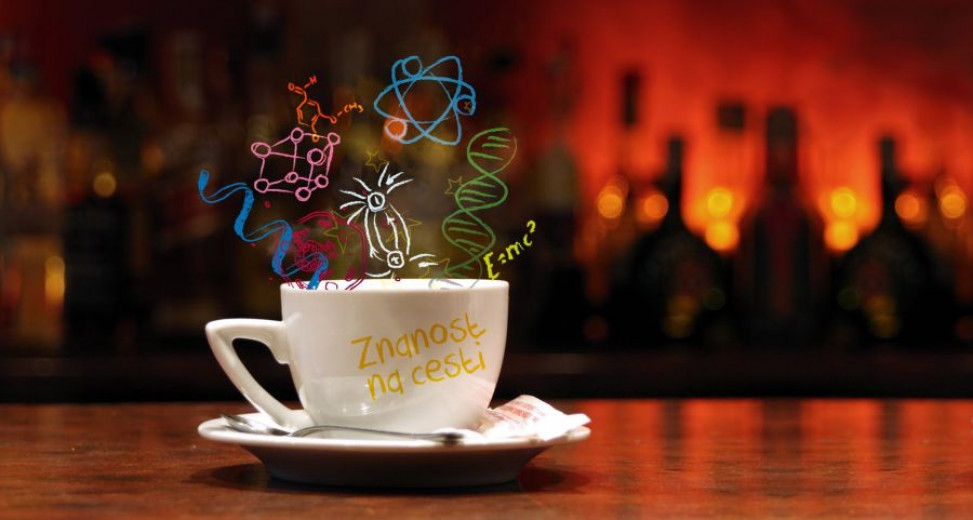
The events (so called A cup of science) are recorded and later published at Videolectures.net service, YouTube as well as an audio podcast (in Slovene). Photo: Dr Saša Novak
A good mix of lecture and discussion
The organisers have clearly managed to produce a good mix of a science lecture and a discussion between scientists and journalists. Science on the Street are not your average science lectures. The scientist is joined onstage by a journalist who makes sure that the guest lecturer does not slip into overly technical terminology and details, asks questions for additional clarifications and makes the lecture feel like a friendly chat. The preparation of a "discussion-type lecture" requires much more effort on their part but, as it turns out, the results are excellent. Why this combination?
The author of the concept, Dr Saša Novak, was aware of the trap in which scientists often get caught – if a lecture is too technical, it can be difficult to understand and less intriguing.
"As researchers, we are used to presenting the results of our work to our peers and usually don't do as well outside academic circles. In the desire to tell everything that we deem important, we tend to overdo it. Over the years I've learned that I need to take a different approach with people outside my field of expertise. If someone asks me what I do now, I tell them that my colleagues and I are developing a material that will stand the extreme conditions in a fusion power plant, which mimics the way the Sun works, and that I am working on a global project. And sometimes, this is followed by a debate."
She is, of course, very keen to know what the invited speakers think of this special lecturing concept. Everyone saw this as a challenge and an excellent opportunity to presenting their work to the general public; at the same time, many had some initial doubts about not being alone onstage. "It is much easier to be one's own director, in the safe refuge of terminological precision, where spontaneity is of secondary importance," said Dr Helena Dobrovoljc from the Fran Ramovš Institute of the Slovenian Language, part of the Research Centre of the Slovenian Academy of Sciences and Arts (ZRC SAZU), when she was invited to participate. After the lecture, she was thrilled with the pleasant atmosphere and the audience's response. Other lecturers – over one hundred of them in the last seven years – had similar thoughts.
Everyone is particularly delighted by the diverse audience who are curious, active and thirsty for knowledge.
Assistant Professor Dr Luka Snoj from the Department of Reactor Physics at the Jožef Stefan Institute said that, as a researcher, he often felt lonely because no one was interested in what he did, apart from a few colleagues. The feeling that the audience was interested in his work was very satisfying. He also said that many lectures were followed by pleasant discussions. Professor Peter Križan commented: "A full café of listeners is a completely different experience from a classroom. And the fact that most of the listeners were young people who had chosen to spend a night on the town attending my lecture instead of doing something else made the event particularly special. The people's interest in the lecture and the stimulating questions in the end were the cherry on top."
The journalists also love the project. The host and editor of a show about science on Slovenian national television, Renata Dacinger, was one of the first to be asked to participate.
She still remembers getting a call from Dr Saša Novak. "I thought it was great," she says. She had always loved science and did not waver for a second to say, "Yes, of course I want to be a part of it". She found the idea of bringing science to the people in a café new and interesting for Slovenia, and she was happy to be able to play a part in its success. Getting to know scientists and their work in a different setting is very welcome and useful in the long run.
The magic of science
Science on the Street lectures have become quite popular and well attended. Dr Saša Novak and Dr Kristina Žagar, who came up with the project seven years ago, did not imagine this at the beginning. The idea for the project was based on the belief that scientists had to do their part to make people aware of the incredible importance of science for society. Drastic cuts in funding for science at the time called for rebellion. Thus, the initiative to "go out into the streets" led to science being taken to the streets. Not literally, but to a café, a bookshop, a library, to the people.
Since May 2013, when Dr Luka Snoj held the first lecture on the creation of stars on Earth (or nuclear fusion) at the Kresija Gallery, the Science on the Street team has organised over one hundred lectures, mostly in Ljubljana, but also elsewhere in Slovenia: in Maribor, Koper, Krško and Kranj. Once a year, the event takes on a slightly different format – a science slam.
Eight to ten researchers get five minutes of stage time to present their research in as interesting and clear way as possible, after which the audience rates their performances. The event dedicated to science thus tends to be an evening of laughter and applause.
Interest in science is spreading like wildfire. It seems as if writing and talking about science is on the rise. It is difficult to estimate what the real reason behind this is, but Saša Novak says that if a small part of it is due to the Science on the Street project, their goal has been achieved and the team's efforts are paying off. Positive responses from the audience and their interest in the lectures are good motivation to keep going.
-
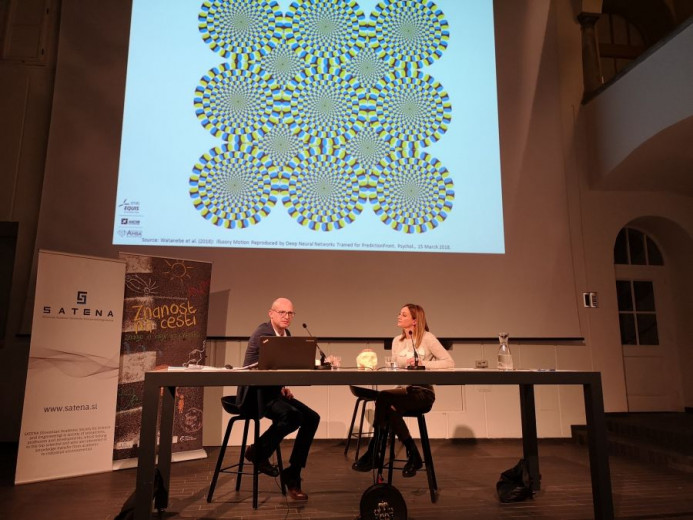
Popular lectures on science take place in the evenings at public places – galleries, cafes, city squares and alike. Photo: Dr Saša Novak
-
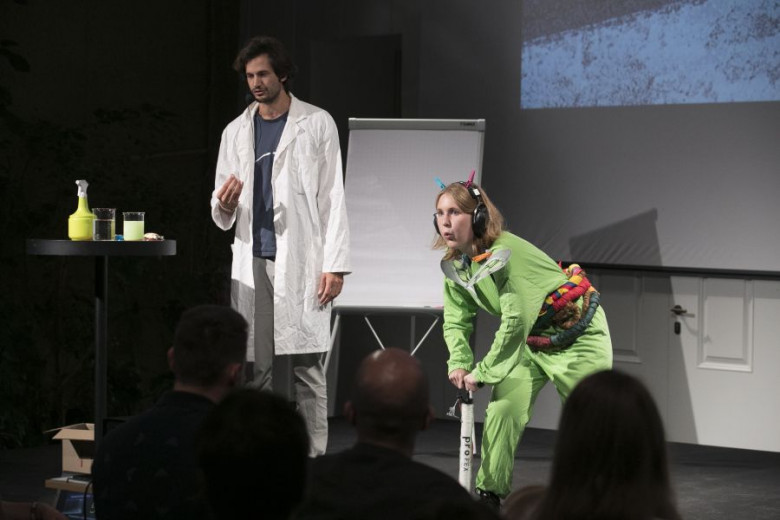
Science on the Street is a project under the auspices and in collaboration with the Slovenian Academic Society of Technical and Natural Sciences (SATENA). Particularly in the first few years in its making, it relied on the volunteer work of the project team and the participants, both researchers and journalists. Since 2015, it has been funded by the Slovenian Research Agency (ARRS-MS-PROM) and donors. Photo: Dr Saša Novak
Science on the Street in 2020
The Science on the Street events will continue to be held in the ZRC Atrium in Ljubljana and the Kranj City Library. The year 2020 will start with a lecture by Professor Blaž Koritnik in Kranj, followed by a lecture by Professor Andrej Šmuc, entitled "Microplastics – A Macroproblem?" and a roundtable discussion entitled "Maintaining Normalcy in a Climate Crisis". You are invited to attend! Admission is free.
Date: 6. March 2020
Time to read: 4 min

